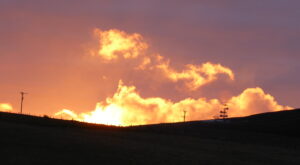
Is anyone else looking forward to the BBC Two series: The Last Kingdom? I am. Not just because it is a cracking story, but also because of the way in which visual media can be used to interpret the past.
One problem with archaeology is that it tends to be monochrome: the colour and noise of the past are often missing. This applies especially to the Mesolithic. Fiction, through the written word and other media, can help to remedy this. It is not without drawbacks though. How much research should authors do? What is the place of ‘truth’. How, exactly, should we use it? Is it ‘academic’ – we can spark public discussion, but does it have a role as an undergraduate exercise? This is something that is to be explored at TAG in Bradford this December and I am very much looking forward to taking part in that session.
Given certain caveats regarding the accuracy of the portrayal I’m all for the use of fiction in archaeology. In fact I’d argue that most archaeological publication is fiction anyway: we can never know precisely what went on in the past. Indeed, approaching the past as fiction in the sense of the written word forces archaeologists to confront some of the gaps that they prefer to gloss over. Excavation of a prehistoric site will rarely tell us what people had for breakfast, yet if we are to interpret the past fully we need to think about things like that.
Of course, with The Last Kingdom we move into the realm of history and you could argue that we have no need to resort to recent fiction here because the Vikings produced their own stories, the Sagas, which provide a detailed and colourful portrayal of their times (setting aside debates over the veracity of the Sagas). I know that ITV are to present the Old English poem Beowulf in the Spring, but I’d like to suggest the Orkneyinga Saga for future consideration. It is an action-packed story with some feisty characters (women and men) and the locations would be magnificent.
You must be logged in to post a comment.